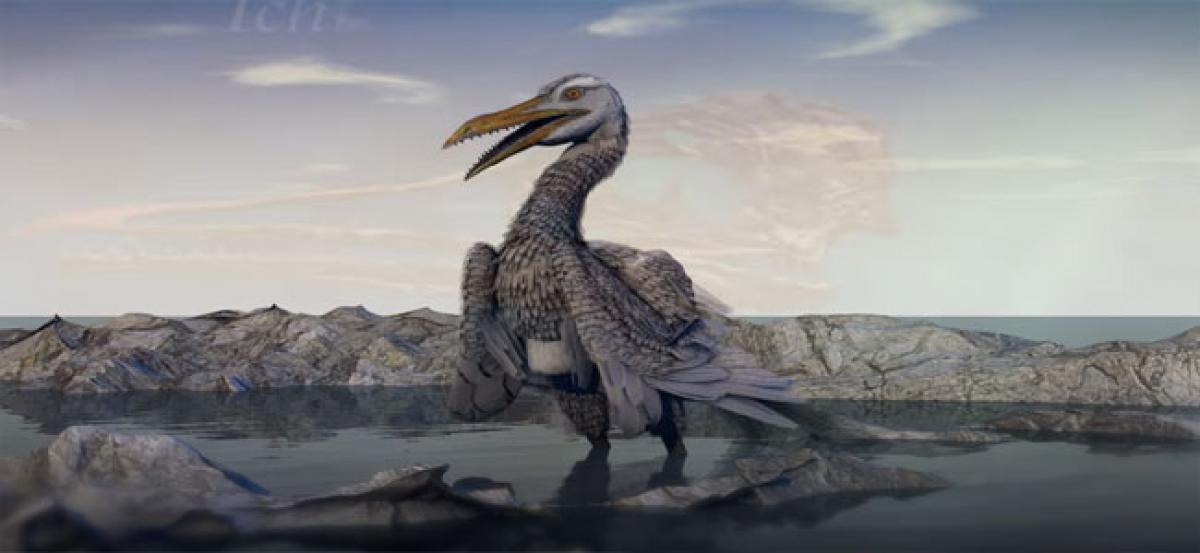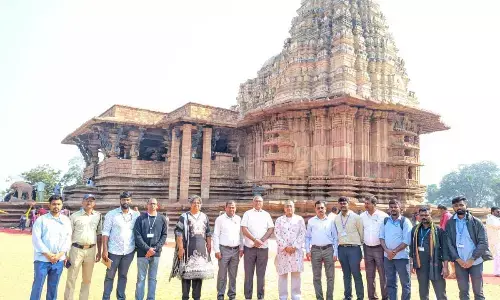How first bird beak looked like found

Scientists have pieced together the skull of an iconic, toothed bird that shows what the bird beak looked like as it first appeared in nature.Ichthyornis dispar holds a key position in the evolutionary trail that leads from dinosaurian species to today\'s avians, according to the study published in the journal Nature.
Washington : Scientists have pieced together the skull of an iconic, toothed bird that shows what the bird beak looked like as it first appeared in nature.Ichthyornis dispar holds a key position in the evolutionary trail that leads from dinosaurian species to today's avians, according to the study published in the journal Nature.
It lived nearly 100 million years ago in North America, looked something like a toothy seabird, and drew the attention of famous naturalists such as Charles Darwin. "Right under our noses this whole time was an amazing, transitional bird," said Bhart-Anjan Bhullar, a paleontologist at Yale University in the US.
"It has a modern-looking brain along with a remarkably dinosaurian jaw muscle configuration," said Bhullar. Despite the existence of partial specimens of Ichthyornis dispar, there has been no significant new skull material beyond the fragmentary remains first found in the 1870s.
Now, researchers have reported new specimens with three-dimensional cranial remains - including one example of a complete skull and two previously overlooked cranial elements that were part of the original specimen at Yale.
Most interesting of all, Bhullar said, is that Ichthyornis dispar shows us what the bird beak looked like as it first appeared in nature. "The first beak was a horn-covered pincer tip at the end of the jaw," said Bhullar. "The remainder of the jaw was filled with teeth. At its origin, the beak was a precision grasping mechanism that served as a surrogate hand as the hands transformed into wings," he said.
"The fossil record provides our only direct evidence of the evolutionary transformations that have given rise to modern forms," said Daniel Field from the University of Bath in the UK.
"This extraordinary new specimen reveals the surprisingly late retention of dinosaur-like features in the skull of Ichthyornis - one of the closest-known relatives of modern birds from the Age of Reptiles," Field said. The researchers said their findings offer new insight into how modern birds' skulls eventually formed.
Along with its transitional beak, Ichthyornis dispar had a brain similar to modern birds but a temporal region of the skull that was strikingly like that of a dinosaur. This indicates that during the evolution of birds, the brain transformed first while the remainder of the skull remained more primitive and dinosaur-like, researchers said.



















